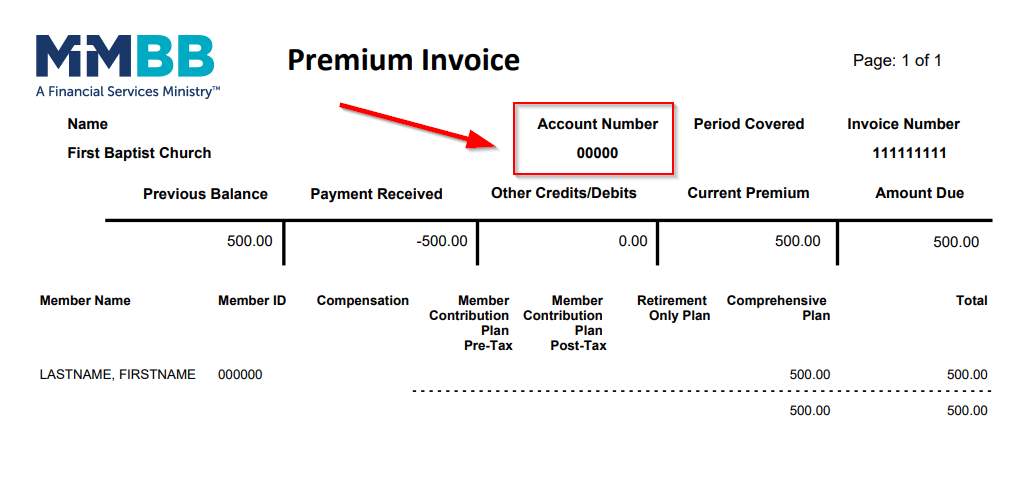The Markets (as of market close August 31, 2024)
Stocks closed mostly higher in August, buoyed by a strong close to the month. Favorable inflation data and economic reports helped drive stocks higher toward the end of the month as investors took heed of Federal Reserve Chair Jerome Powell's statement that it is approaching time to lower interest rates. The Global Dow led the benchmark indexes, with the S&P 500, the Dow, and the NASDAQ all ending the month higher. The Russell 2000 wasn't able to keep pace as it closed the month lower. Despite the strong finish, stocks rode a bumpy ride, falling lower mid-month as investors worried that the economy was slowing, and the Fed didn't react in time to stem the negative tide. However, as more favorable economic reports emerged and the Fed seemed ready to ease its restrictive monetary policy, investors were ready to jump back into the market. Among the market sectors, only consumer discretionary and energy declined, while real estate and consumer staples advanced the most.
Inflationary data showed price pressures continued to stabilize in July. The 12-month interest rates for the Consumer Price Index (CPI) and the personal consumption expenditures (PCE) price index each came in at 2.9%, as they inched closer to the Federal Reserve's 2.0% target range. The annual inflation rate has dropped notably from a high of 6.2% in October 2021. Prices for commodities that are prevalent for most households, such as food at home, gasoline, new and used motor vehicles, and apparel, changed very little over the year. Shelter costs were up 0.4% in July and up 5.1% compared to July 2023. Shelter costs are decelerating only slowly and are still a significant contributor to upward price pressure on services.
Growth of the U.S. economy continued at a modest pace, despite the Fed's restrictive monetary policy. The gross domestic product (GDP) met expectations after increasing 3.0% in the second quarter following a 1.4% increase in the first quarter (see below). Consumer spending, the largest contributor in the calculation of GDP, rose 2.9%, with spending rising in durable goods, nondurable goods, and services. Gross domestic income, another indicator of the health of the economy, rose 1.3% in the second quarter. Moderate economic growth should be another plus as the Fed weighs its current monetary policy.
Job growth continued to slow in July, falling short of expectations. Downward revisions to estimates for June and May clearly show that average monthly gains in the second quarter of the year (177,000) are well below the average gains in the first quarter (267,000). Wage growth declined 0.3 percentage point over the past 12 months. New weekly unemployment claims decreased from a year ago, while total claims paid increased (see below).
Nearing the end of Q2 corporate earnings season, S&P 500 companies are reporting mixed results. About 91% of the S&P 500 companies have reported results. Of those companies, 78% reported earnings per share (EPS) above estimates, which is in line with the five-year average of 77% and higher than the 10-year average of 74%. Overall, as of August 12, the index reported an aggregate earnings growth rate of 3.5%, which is below the 5-year average of 8.6% and below the 10-year average of 6.8%. In general, the market has rewarded companies that reported positive earnings surprises with price increases, while companies that fell short of earnings expectations have generally seen their stock values dip.
Sales of both existing homes and new homes rose in July (see below). While home sales remain a bit sluggish, buyers are seeing more choices partly due to more inventory and slightly lower mortgage rates. Higher mortgage rates have slowed sales, with inventory expanding and the sales process lengthening. According to Freddie Mac, the 30-year fixed-rate mortgage averaged 6.49% as of August 15, up from 6.47% one week ago, but down from 7.09% from one year ago.
Industrial production retracted in July from June, which saw a 0.3 percentage point revision lower. Manufacturing output decreased in July and was 0.1% above its year-earlier level. Within manufacturing, durables manufacturing declined 0.9% but nondurables rose 0.4%. In July, the manufacturing sector retracted in for the first time in seven months, while the services sector saw a notable expansion of business activity.
Bond yields fell as bond prices increased in August. Ten-year Treasury yields generally closed the month lower. The two-year Treasury yield dropped 3.7 basis points to about 3.93% on the last trading day of August. The dollar weakened against a basket of world currencies, driven lower by the anticipated interest rate cuts later in the year. Gold prices hit a record high of $2,535.30 to close out August. Crude oil prices declined, as investors anticipated a supply increase by OPEC+ in October and decreased demand in China. Gasoline prices hit an eight-month low, as the retail price of regular gasoline was $3.313 per gallon on August 26, $0.158 below the price a month earlier and $0.500 less than the price a year ago.
MARKET SUMMARY
| MARKET/INDEX |
2023 CLOSE |
PRIOR MONTH |
AS OF 8/30 |
MONTHLY CHANGE |
YTD CHANGE |
| DJIA |
37,689.54 |
40,842.79 |
41,563.08 |
1.76% |
10.28% |
| NASDAQ |
15,011.35 |
17,599.40 |
17,713.63 |
0.65% |
18.00% |
| S&P 500 |
4,769.83 |
5,522.30 |
5,648.40 |
2.28% |
18.42% |
| RUSSELL 2000 |
2,027.07 |
2,254.48 |
2,217.63 |
-1.63% |
9.40% |
| GLOBAL DOW |
4,355.28 |
4,811.50 |
4,934.57 |
2.56% |
13.30% |
| FED. FUNDS |
5.25%-5.50% |
5.25%-5.50% |
5.25%-5.50% |
0 bps |
0 bps |
| 10-YEAR TREASURIES |
3.86%s |
4.10% |
3.90 |
-20 bps |
4 bps |
| US DOLLAR-DXY |
101.39 |
104.09 |
101.68 |
-2.32% |
0.29% |
| CRUDE OIL-CL=F |
$71.30 |
$78.53 |
$73.61 |
-6.27% |
3.24% |
| GOLD-GC=F |
$2,072.50 |
$2,494.20 |
$2,535.30 |
1.65% |
22.33% |
Chart reflects price changes, not total return. Because it does not include dividends or splits, it should not be used to benchmark performance of specific investments.
Latest Economic Reports
- Employment: Total employment increased by 114,000 in July, well below the consensus of 180,000 and lower than the 12-month average gain of 215,000. The July increase followed downward revisions in both May and June, which totaled 29,000. In July, job gains occurred in health care, transportation and warehousing, and construction. In July, the unemployment rate increased 0.2 percentage point to 4.3% and was 0.8 percentage point above the rate from a year earlier (3.5%). The number of unemployed persons increased by 352,000 to 7.2 million. In July, the number of long-term unemployed (those jobless for 27 weeks or more) was relatively unchanged at 1.5 million and accounted for 21.6% of all unemployed people. The labor force participation rate, at 62.7%, was 0.1 percentage point above the prior month's estimate, while the employment-population ratio, at 60.0%, ticked down 0.1 percentage point from the previous month. In July, average hourly earnings increased by $0.08, or 0.2%, to $35.07. Since July 2023, average hourly earnings rose by 3.6%, which is down from the June figure of 3.9%. The average workweek edged down 0.1 hour to 34.2 hours.
- There were 231,000 initial claims for unemployment insurance for the week ended August 24, 2024. During the same period, the total number of workers receiving unemployment insurance was 1,868,000. A year ago, there were 234,000 initial claims, while the total number of workers receiving unemployment insurance was 1,859,000.
- FOMC/interest rates: The Federal Open Market Committee did not meet in August.
- GDP/budget: According to the second estimate from the Bureau of Economic Analysis, the economy, as measured by gross domestic product, accelerated at an annualized rate of 3.0% in the second quarter of 2024, up from the first estimate of 2.8%. GDP increased 1.4% in the first quarter. Personal consumption expenditures rose 2.9% in the second quarter compared to a 1.5% increase in the previous quarter. Consumer spending on goods increased 3.0%, while spending on services rose 2.9%. Personal consumption expenditures (1.95%) contributed the most to overall economic growth. Gross domestic investment advanced 7.5% in the second quarter, well above the 4.4% increase in the first quarter. Nonresidential (business) fixed investment advanced 4.6% in the second quarter (4.4% in the first quarter), while residential fixed investment rose 2.0% compared to a 16.0% increase in the first quarter. Exports climbed 1.6%, while imports, which are a negative in the calculation of GDP, increased 7.0%. Consumer prices, as measured by the personal consumption expenditures price index, increased 2.6%, compared with an increase of 3.4% in the first quarter. Excluding food and energy prices, the PCE price index increased 2.9%, compared with an increase of 3.7% in the prior quarter.
- The federal budget deficit in July was $244.0 billion following June's deficit of $71.0 billion. In July, government receipts totaled $330.0 billion, while government outlays were $574.0 billion. Through the first 10 months of fiscal year 2024, the total deficit sits at $1,517.0 trillion, which is roughly $357.0 billion lower than the deficit through the first 10 months of the previous fiscal year.
- Inflation/consumer spending: The PCE price index increased 0.2% in July, right at expectations, after increasing 0.1% in June. The 12-month PCE price index for July, at 2.5%, was unchanged from the June figure. Excluding food and energy, the PCE price index increased 0.2% for July and 2.6% for the year ended in July. Both estimates were unchanged from June. Both personal income and disposable personal income (less taxes) advanced 0.3% in July. Personal spending, as measured by personal consumption expenditures, rose 0.5% in July (0.3% in June).
- The Consumer Price Index (CPI) rose 0.2% in July after declining 0.1% in June. Over the 12 months ended in July, the CPI rose 2.9%, down 0.1 percentage point from the 12-month period ended in June. This was the smallest 12-month increase since March 2021. Excluding food and energy, the CPI rose 0.2% in July, (0.1% in June), and 3.2% from July 2023, which is the smallest 12-month increase since April 2021. In July, nearly 90.0% of the monthly increase was attributable to a 0.4% rise in prices for shelter. Energy prices were unchanged from June, while prices for food rose 0.2% in July (2.2% for the year).
- The Producer Price Index rose 0.1% in July following a 0.2% increase in June. The increase was attributable to a 0.6% increase in prices for goods. Prices for services, which had been stubbornly higher, declined 0.2% in July. For the 12 months ended in July, producer prices advanced 2.2%, 0.4 percentage point below the rate for the 12-months ended in June. Prices for services rose 2.6% for the year ended in July, the lowest rate since early this year.
- Housing: Sales of existing homes rose 1.3% in July, but declined 2.5% over the last 12 months. According to the National Association of Realtors® (NAR), the market for existing homes remained sluggish, although an increase in choices and slowly declining mortgage interest rates helped increase sales. Unsold inventory of existing homes in July represented a 4.0-month supply at the current sales pace, down slightly from the June estimate. The median existing-home price was $422,600 in July, down from the June estimate of $426,900, but 4.2% above the July 2023 price of $405,600. Sales of existing single-family homes increased 1.4% in July but were 1.4% under the July 2023 rate. The median existing single-family home price was $428,500 in July, down from $432,900 in June and well above the July 2023 estimate of $411,200.
- New single-family home sales also increased in July, climbing 10.6% above the June estimate and 5.6% higher than the July 2023 rate. The median sales price of new single-family houses sold in July was $429,800 ($416,700 in June). The July average sales price was $514,800 ($501,700 in June). The inventory of new single-family homes for sale in July represented a supply of 7.5 months at the current sales pace, down from 8.4 months in June.
- Manufacturing: Industrial production decreased 0.6% in July following a 0.3% advance in June. Early July shutdowns concentrated in the petrochemical and related industries due to Hurricane Beryl held down the growth of industrial production by an estimated 0.3 percentage point. Manufacturing output dipped 0.3% in July as manufacturing of motor vehicles and parts fell nearly 8.0%. Manufacturing excluding motor vehicles and parts rose 0.3%. Mining output was unchanged in July, while utilities declined 3.7%. For the 12 months ended in July, total industrial production was 0.2% below its year-earlier level. Over the same period, manufacturing increased 0.1%, mining decreased 1.5%, while utilities fell 0.1%.
- New orders for durable goods jumped 9.9% in July, following June's 6.9% decrease. Excluding transportation, new orders decreased 0.2%. Excluding defense, new orders increased 10.4%. Transportation equipment, up two of the last three months, drove the increase after climbing 34.8%. New orders for nondefense capital goods advanced 41.9% in July, while new orders for defense capital goods increased 1.2%.
- Imports and exports: U.S. import prices ticked up 0.1% in July after being unchanged in June. Prices for import fuel increased 0.5% in July after declining 1.7% the previous month. Import prices advanced 1.6% over the last 12 months, the largest 12-month increase since December 2022. Export prices increased 0.7% in July after declining 0.3% the previous month. Higher nonagricultural prices in July more than offset lower prices for agricultural exports. Export prices increased 1.4% over the past year, the largest 12-month advance since January 2023.
- The international trade in goods deficit was $102.7 billion in July, up $6.1 billion, or 6.3%, from June. Exports of goods were $172.9 billion in July, virtually unchanged from June exports. Imports of goods were $275.6 billion in July, $6.1 billion, or 2.3%, above the June estimate. Since July 2023, exports increased 4.4%, while imports increased 8.2%.
- The latest information on international trade in goods and services, released August 6, is for June and revealed that the goods and services trade deficit was $73.1 billion, down $1.9 billion, or 2.5%, from the May deficit. June exports were $265.9 billion, 1.5% more than May exports. June imports were $339.0 billion, 0.6% above May's estimate. Year to date, the goods and services deficit increased $22.7 billion, or 5.6%, from the same period in 2023. Exports increased $58.0 billion, or 3.8%. Imports increased $80.7 billion, or 4.2%.
- International markets: Global inflation continued to trend lower. Eurozone inflation hit a three-year low when the annual rate fell to 2.2% in August. The Euro fell to a two-week low after trading at $1.108 at the end of August as falling consumer prices reinforced expectations for an August rate cut by the European Central Bank. Declining inflation also impacted bond yields. The 10-year German bond yield fell to 2.25% as investors anticipated rate cuts. In China, manufacturing PMI retracted to 49,08, while the GDP slipped from 5.3% to 4.7%. For August, the STOXX Europe 600 Index rose 5.5%; the United Kingdom's FTSE gained 2.5%; Japan's Nikkei 225 Index rose 7.6%; and China's Shanghai Composite Index declined 2.2%.
- Consumer confidence: Consumer confidence rose in August to 103.3, from an upwardly revised 101.9 in July, according to the Conference Board Consumer Confidence Index®. The Present Situation Index, based on consumers' assessment of current business and labor market conditions, improved to 134.4 in August, up from 133.1 in the previous month. The Expectations Index, based on consumers' short-term outlook for income, business, and labor market conditions, increased to 82.5 in August, up from 81.1 in July.
Data sources: Economic: Based on data from U.S. Bureau of Labor Statistics (unemployment, inflation); U.S. Department of Commerce (GDP, corporate profits, retail sales, housing); S&P/Case-Shiller 20-City Composite Index (home prices); Institute for Supply Management (manufacturing/services). Performance: Based on data reported in WSJ Market Data Center (indexes); U.S. Treasury (Treasury yields); U.S. Energy Information Administration/Bloomberg.com Market Data (oil spot price, WTI, Cushing, OK); http://www.goldprice.org (spot gold/silver); Oanda/FX Street (currency exchange rates). News items are based on reports from multiple commonly available international news sources (i.e. wire services) and are independently verified when necessary with secondary sources such as government agencies, corporate press releases, or trade organizations. All information is based on sources deemed reliable, but no warranty or guarantee is made as to its accuracy or completeness. Neither the information nor any opinion expressed herein constitutes a solicitation for the purchase or sale of any securities, and should not be relied on as financial advice. Past performance is no guarantee of future results. All investing involves risk, including the potential loss of principal, and there can be no guarantee that any investing strategy will be successful.
The Dow Jones Industrial Average (DJIA) is a price-weighted index composed of 30 widely traded blue-chip U.S. common stocks. The S&P 500 is a market-cap weighted index composed of the common stocks of 500 largest, publicly traded companies in leading industries of the U.S. economy. The NASDAQ Composite Index is a market-value weighted index of all common stocks listed on the NASDAQ stock exchange. The Russell 2000 is a market-cap weighted index composed of 2,000 U.S. small-cap common stocks. The Global Dow is an equally weighted index of 150 widely traded blue-chip common stocks worldwide. The U.S. Dollar Index is a geometrically weighted index of the value of the U.S. dollar relative to six foreign currencies. Market indices listed are unmanaged and are not available for direct investment.
IMPORTANT DISCLOSURES
Broadridge Investor Communication Solutions, Inc. does not provide investment, tax, legal, or retirement advice or recommendations. The information presented here is not specific to any individual’s personal circumstances.
To the extent that this material concerns tax matters, it is not intended or written to be used, and cannot be used, by a taxpayer for the purpose of avoiding penalties that may be imposed by law. Each taxpayer should seek independent advice from a tax professional based on his or her individual circumstances.
These materials are provided for general information and educational purposes based upon publicly available information from sources believed to be reliable — we cannot assure the accuracy or completeness of these materials. The information in these materials may change at any time and without notice.








